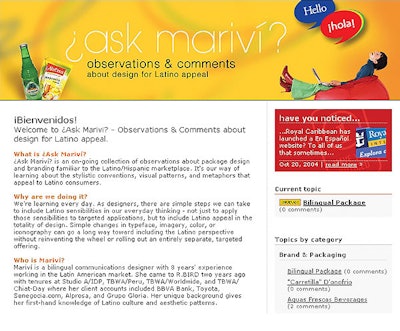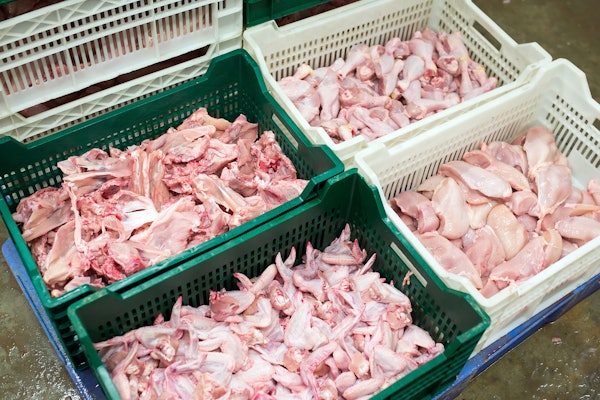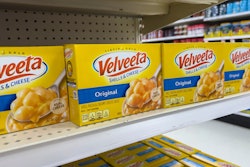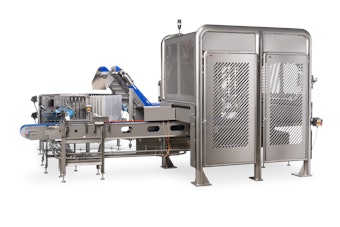With so many questions about package design approaches for Hispanic, Latino, and bilingual products, Packaging World did what many have done over the past two years: ask Mariví. ¿ask mariví? is an interactive part of www.rbird.com, the Web site of New York-based design firm R.Bird & Co. It’s run by Mariví Chong (pictured at right), a bilingual communications designer and consultant with eight years’ experience working in the Latin American market. Hispanic by birth and heritage, Mariví obtained a bachelor’s degree in graphics design and a master’s in digital graphics in Lima, Peru. Mariví shares her expertise exclusively with PW readers.
PW: What is your personal interest in Hispanic package design?
Mariví: As a Latina, I am proud of our culture because it is so diverse. The richness and diversity attracts me—I learn something new about it every day. As a designer I am constantly aware of what surrounds and interests me. When I find something in particular, I post an observation about it in ¿ask mariví?
PW: What are the latest package design trends in this market?
Mariví: Trends are for smaller-sized containers and, at the same time, family-sized portions. These trend extremes seem to be attractive to Latinos and Hispanics. One example is Welch’s small-sized “Welchitos,” juices targeted for Latino and Hispanic consumers. Welchitos (see pack
world.com/go/c118) are packed in a convenient 7.5-oz size canister, smaller than the regular 12-oz can. On the other side, family-sized economy/club store packages are attractive because they are less expensive and Latinos and Hispanics usually prepare bigger meals for the whole family.
PW: Warm colors such as red-orange are popular in designs for this segment?
Mariví: Warm colors can be very useful to separate “regular” from “Hispanic” in certain categories. Other cases will depend on what the product has to communicate. For example, green and earthy colors for organic products does not mean the package lacks Latino appeal versus changing to warm colors. We also like to consider how to include Latino appeal and perspective in more of what we do, whether bilingual or not.
PW: Is bilingual (English/Spanish) packaging a growing trend?
Mariví: More companies are adding Latino appeal to their products by creating new line extensions or flavor variants and including bilingual content as part of the whole picture. Marketers recognize the Latino and Hispanic population is becoming a big source of purchases as their numbers and buying power increase (see sidebar, p.66).
PW: What are the key elements that make for a great bilingual package design?
Mariví: A great bilingual package should have the same key elements as a nonbilingual design. However, because each element often requires twice as much copy, more attention should be given to simplicity and clarity.
PW: What are the design differences in Spanish-only versus bilingual copy?
Mariví: The biggest difference I find in Spanish-only graphics is that they are flat and simple, while American package design tends toward complex graphics with bold, dynamic typography, three-dimensional logos, loud colors, and detailed backgrounds, shadows and gradations. American products also tend to have more elaborate, supportive symbols and icons to sell the products and push their particular differences.
PW: How does a marketer decide to make bilingual vs. Spanish-only?
Mariví: Experience says a lot depends on which audience the product is going to target and where it is going to be sold.
PW: What’s the difference between “Latino” and “Hispanic”?
Mariví: Hispanic is a generic term to describe someone of Spanish-speaking origin. A Latino is someone of Spanish speaking origin who is from Latin America. However, the term Latino is more cultural. It’s about how you have been raised and the culture you embrace; how you dress, what you eat, what music you listen to, and your friendly open attitude. You can find a Latino with an Italian, Russian, Japanese, Croatian, or like me, Chinese, last name.
PW: What’s the most common mistake in bilingual packaging design?
Mariví: Carelessly crafted and poorly translated copy can be a big mistake because the message does not get across like it should. Latino and Hispanic buyers might recognize the brand, but may be reluctant to purchase because they don’t understand the supporting statements and descriptions. It’s very easy to feel overwhelmed.
PW: What’s the worst mistake you’ve seen?
Mariví: A line of wines with a series of images stereotyping Latinos and Hispanics. The images portray Latinos in a party or sexy attitude. Instead of communicating the product attributes such as flavor, the focus was on what is ultimately bad taste.
PW: What about subsegments: Does package design that is appealing, for example, to all women work just as well for Hispanic women?
Mariví: A package design that appeals to all women can appeal to Latinas, too, though a product that appeals to all women equally, won’t appeal strongly to anyone specifically. In that case, a lot depends on the product attributes such as fragrance, flavor, and brand familiarity, among others.
PW: What’s the most interesting question you’ve received?
Mariví: I received an e-mail from someone who was assigned to develop a name for a new product targeted to Latinos and Hispanics. He needed advice on possible names that they were creating to appeal to the Hispanic market. For each step he took, he wanted to know my opinion. The name I recommended was chosen by the company.
PW: Gracias, Mariví.
For more about ¿ask mariví?, visit: www.rbird.com/askmarivi.
See sidebar to this article: From the ¿ask mariví? Web site:
See sidebar to this article: MiCasa design es muy bueno
See sidebar to this article: The latest Hispanic market facts



















